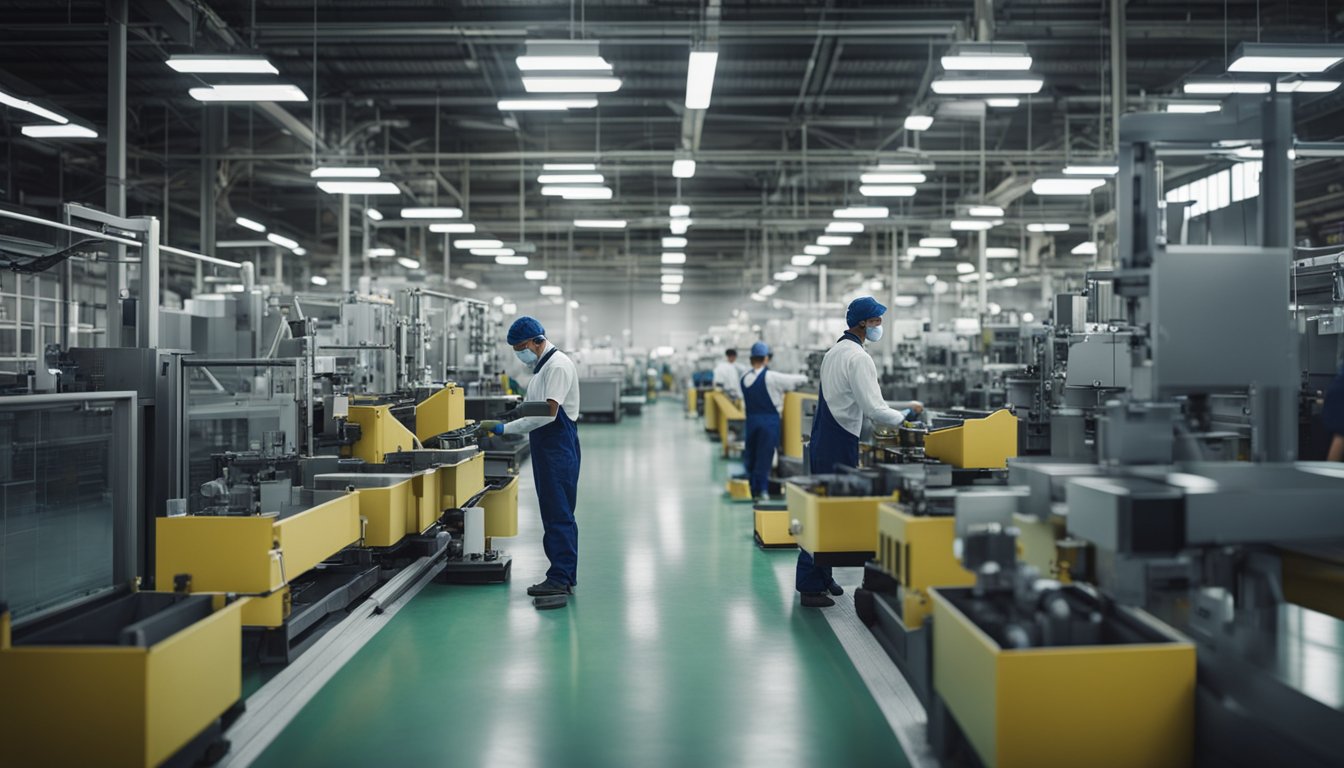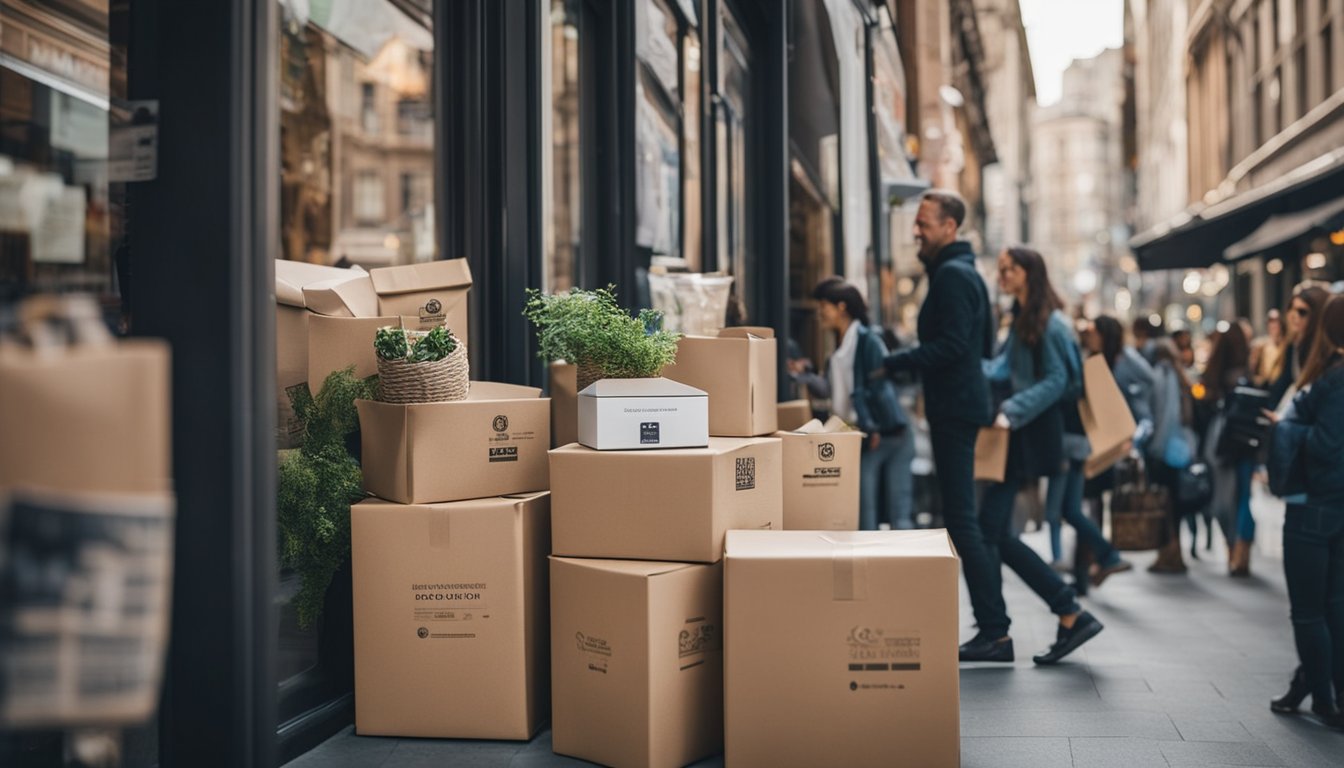Late updated: 19 Nov 2024 13:11
Written by: Sarah Hollister
Eco-Friendly Packaging Innovations For Businesses: Latest Trends and Benefits
In today's rapidly evolving business landscape, eco-friendly packaging innovations have taken centre stage as industries increasingly move towards sustainable practices. As businesses grapple with regulatory pressure and shifting consumer preferences, adopting packaging solutions that reduce environmental impact is no longer optional. The emphasis on sustainability in packaging not only helps lessen ecological footprints but also enhances brand loyalty by aligning with the values of environmentally conscious consumers.

The shift to sustainable packaging is marked by exciting developments in materials and design. From recycled plastics to compostable materials, companies are transforming traditional packaging to meet consumer demand for eco-friendly options. Such innovation reflects a commitment to environmental responsibility and showcases businesses' ability to adapt to new market realities.
This transformation isn’t just about materials; it’s about reimagining business practices and engaging with eco-conscious consumers on a deeper level. Businesses ready to innovate will find that sustainable packaging is an opportunity ripe for exploration. Let's delve into the trends, challenges, and opportunities that come with embracing eco-friendly packaging solutions.
Key Takeaways
- Eco-friendly packaging strengthens brand loyalty and consumer trust.
- Innovative materials and designs are revolutionising sustainable practices.
- Businesses face increasing regulatory and consumer-driven pressures for sustainability.
Advancements in Sustainable Packaging Solutions
Sustainable packaging is rapidly evolving to address environmental concerns by incorporating biodegradable materials, plant-based solutions, and designs that support the circular economy. Below, we outline key advancements in these areas.
Innovations in Biodegradable Materials
Biodegradable packaging materials aim to minimise waste by breaking down naturally without harming the environment. Recent innovations highlight the use of biodegradable plastics derived from natural sources like corn starch and sugarcane. These materials offer an alternative to traditional plastics by decomposing more quickly under specific conditions.
Compostable materials are another promising advance. Designed for minimalist design, they reduce excess use of materials while maintaining functionality. These materials serve industries looking to reduce their ecological footprint without compromising product integrity. By incorporating these materials, companies enhance operational efficiency and align with consumer demand for eco-friendly products.
The Rise of Plant-Based Packaging Solutions
Plant-based alternatives are gaining momentum as they provide a renewable, eco-friendly source for packaging design. Mycelium, the vegetative part of fungi, offers a sustainable option. It can be moulded into diverse shapes and used as a replacement for Styrofoam, offering biodegradable packaging that breaks down naturally.
Plant-based plastics are another advancement, boasting reduced carbon footprints. These plastics, made from recycled materials or renewable sources, ensure recyclability and align with the principles of the circular economy. Additionally, edible packaging made from seaweed or other plant derivatives is being explored, providing innovative ways to reduce waste.
Designing for the Circular Economy
Designing with the circular economy in mind means creating packaging that can be reused, recycled, or composted, thus minimising waste. This approach emphasises the importance of designing products that stay within use cycles, thereby extending their lifespan.
Key packaging trends include the use of sustainable materials and incorporating features that promote recyclability. Plantable packaging, which contains seeds that sprout when disposed of, is a creative solution aligning with sustainable goals. Such advancements encourage businesses to rethink their packaging strategies while maintaining operational efficiency and reducing environmental impact.
In our pathway to sustainability, embracing these technological advancements is crucial. They represent significant steps forward in our collective effort to address environmental challenges.
Impact of Eco-Conscious Business Practices

Eco-conscious business practices significantly influence both environmental and economic landscapes. As businesses adopt sustainable strategies, they can reduce ecological impacts and enjoy potential cost savings. The ensuing sections explore how specific packaging choices help lessen carbon footprints, ways to communicate environmental stewardship, and the economic benefits of adopting these practices.
Reducing Carbon Footprint through Packaging Choices
Our selection of packaging solutions plays a crucial role in reducing our carbon footprint. By using materials such as recycled paper, recyclable, and reusable packaging, we help minimise packaging waste and pollution. Lightweight materials are effective in not only reducing resource depletion but also in lowering emissions associated with transportation.
Smart packaging technologies also contribute to carbon footprint reduction. For example, incorporating biodegradable packing peanuts or eco-friendly alternatives to traditional plastic can significantly cut down on plastic pollution. Consumers increasingly expect products packaged in environmentally friendly ways, and meeting these expectations strengthens brand reputation.
Measurement and Communication of Environmental Stewardship
Measuring and reporting environmental stewardship is essential for transparent business practices. Metrics such as waste reduction, pollution control, and resource conservation are central to demonstrating our commitment to sustainability. By tracking these key performance indicators, we can better understand and manage our environmental impact.
Communicating these efforts to eco-conscious consumers builds trust and enhances brand loyalty. Using clear labels and certifications on recyclable packaging indicates our dedication to environmental conservation. Sharing data on reduced carbon footprints helps us cultivate a corporate image that resonates with modern consumer values and expectations.
Economic Benefits and Cost Savings
Sustainable packaging solutions are not just beneficial for the environment; they also offer economic advantages. By lowering material costs through the use of lightweight and recyclable materials, we achieve significant cost savings. Reducing packaging waste translates into decreased disposal costs and improved operational efficiency.
Moreover, companies often find they can access government incentives and subsidies by implementing eco-friendly practices. These financial incentives, combined with enhanced brand appeal, drive increased revenue opportunities. As a result, adopting sustainable practices aligns with both responsible environmental stewardship and sound economic strategy.
Frequently Asked Questions

We are exploring key trends and strategies within eco-friendly packaging for businesses. The focus includes emerging innovations, cost-effective solutions, and the role of leading companies in advancing sustainable practices.
What are the leading trends in environmentally friendly packaging for 2024?
In 2024, there is a noticeable shift towards using biodegradable materials and compostable packaging. Additionally, the concept of minimalism in design is gaining traction, emphasising reduced material use and simpler aesthetics. Reusable and refillable packaging options are also becoming popular, aligning with consumer preferences for sustainable solutions.
How can a small business adopt eco-friendly packaging effectively?
For small businesses, starting with incremental changes can be effective. Switching to recycled materials, reducing packaging size, and opting for local suppliers to cut down carbon footprint are viable steps. Educating customers about sustainable practices and using eco-friendly labelling can also enhance customer engagement and brand loyalty.
Which companies are leading the way in producing eco-friendly packaging materials?
Several companies are spearheading the movement towards sustainable packaging. Firms like Loop and Ecovative Design are notable for their innovative use of materials such as mycelium. Large corporations like Unilever and Nestlé have committed to increasing the use of recyclable materials in their packaging operations significantly.
What new eco-friendly packaging innovations are emerging in the food industry?
The food industry is seeing advancements in plant-based and edible packaging solutions. For instance, seaweed-derived films are being developed as an alternative to plastic wraps. Innovations such as water-soluble sachets and compostable trays derived from agricultural waste are also making a significant impact.
How can businesses ensure their packaging is both eco-friendly and cost-effective?
Businesses can balance eco-friendliness and cost-effectiveness by investing in durable materials that reduce replacement frequency and waste. Establishing partnerships with suppliers for bulk purchasing and exploring government incentives for sustainable practices can reduce overall costs. Efficient design can further minimise material use and transportation expenses.
What innovative materials are being used in sustainable packaging designs?
Several innovative materials have gained popularity in sustainable packaging designs, such as mushroom-based packaging, which uses mycelium to create compostable alternatives. Other noteworthy materials include recycled paper pulp, cornstarch-based polymers, and biodegradable plastics, which provide versatile and eco-conscious options for various industries.
